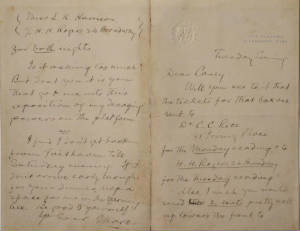 Treatments
|
|
Common treatments for paper
artifacts include washing to reduce or remove acidic stains such as water tide lines, foxing stains (brown spots often seen
in antique prints and Many artifacts have old pressure sensitive tapes attached to them such as scotch tapes and masking tapes. These tapes become darkened and embrittled over the years and can be difficult for the owner to remove without tearing or thinning the paper. These old tapes, in most cases, can be safely removed from the paper and their stains removed as well. Documents
are often folded and over time these folds break and become tears. These precious and fragmenting artifacts can be supported
with Japanese tissues to hold them together and preserve a piece of family history. Paper losses such as punctures and
holes can be filled with matching papers. Pigment losses in these areas can be replaced. Flaking and unstable media can be
consolidated and mold can be removed. Antique artifacts were often glued down to cardboard and other boards that cause the paper to become darker and embrittled over time. In many cases it is necessary to remove these damaging materials and glues from the paper and possibly replace the backing with archival support tissues if required. Removing these damaging materials will not only help preserve important artifacts, but can also breath new life into a piece that has been damaged by age and neglect. |
This is a lithograph poster by Pierre Bonnard, "La Revue Blanche". This lithograph was washed to remove tape stains and darkening. The embrittled sheet was also backed with Japanese tissue to supprt the delicate paper. The letter below was written by Mark Twain and was badly stained by old scotch tapes. The letter was treated to remove tape reside and stains. The letter was also backed with a very thin Japanese tissue to support the center fold area.
|
|
|
 drawings), acidic burns or discoloration in the paper from old framing materials and stains from old glues. Washing treatments
not only remove damaging and distracting stains and darkening from the paper, but they also leave the paper in much better
condition by removing harmful elements form the sheet.
drawings), acidic burns or discoloration in the paper from old framing materials and stains from old glues. Washing treatments
not only remove damaging and distracting stains and darkening from the paper, but they also leave the paper in much better
condition by removing harmful elements form the sheet.



